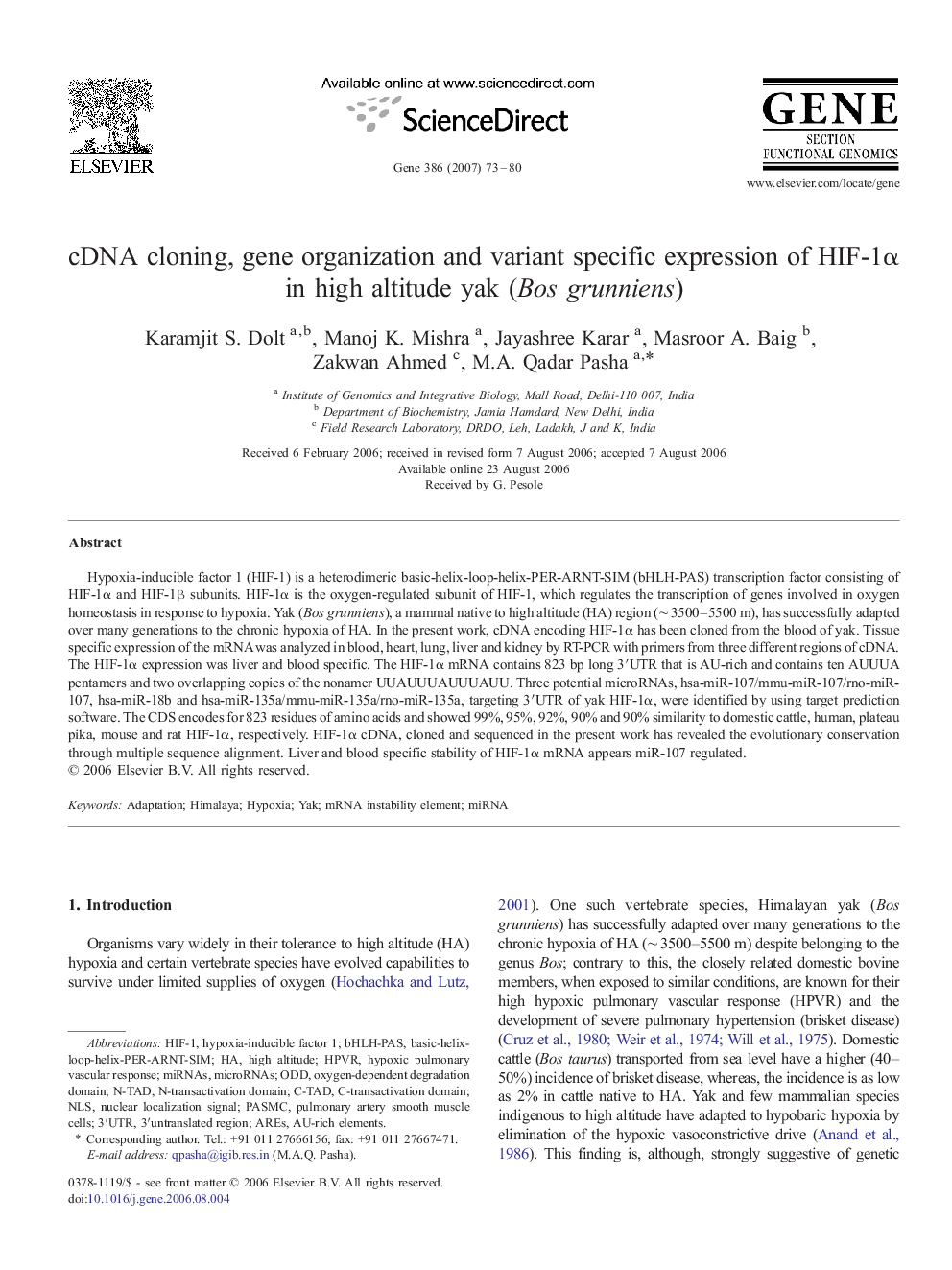| Article ID | Journal | Published Year | Pages | File Type |
|---|---|---|---|---|
| 2819936 | Gene | 2007 | 8 Pages |
Hypoxia-inducible factor 1 (HIF-1) is a heterodimeric basic-helix-loop-helix-PER-ARNT-SIM (bHLH-PAS) transcription factor consisting of HIF-1α and HIF-1β subunits. HIF-1α is the oxygen-regulated subunit of HIF-1, which regulates the transcription of genes involved in oxygen homeostasis in response to hypoxia. Yak (Bos grunniens), a mammal native to high altitude (HA) region (∼ 3500–5500 m), has successfully adapted over many generations to the chronic hypoxia of HA. In the present work, cDNA encoding HIF-1α has been cloned from the blood of yak. Tissue specific expression of the mRNA was analyzed in blood, heart, lung, liver and kidney by RT-PCR with primers from three different regions of cDNA. The HIF-1α expression was liver and blood specific. The HIF-1α mRNA contains 823 bp long 3′UTR that is AU-rich and contains ten AUUUA pentamers and two overlapping copies of the nonamer UUAUUUAUUUAUU. Three potential microRNAs, hsa-miR-107/mmu-miR-107/rno-miR-107, hsa-miR-18b and hsa-miR-135a/mmu-miR-135a/rno-miR-135a, targeting 3′UTR of yak HIF-1α, were identified by using target prediction software. The CDS encodes for 823 residues of amino acids and showed 99%, 95%, 92%, 90% and 90% similarity to domestic cattle, human, plateau pika, mouse and rat HIF-1α, respectively. HIF-1α cDNA, cloned and sequenced in the present work has revealed the evolutionary conservation through multiple sequence alignment. Liver and blood specific stability of HIF-1α mRNA appears miR-107 regulated.
